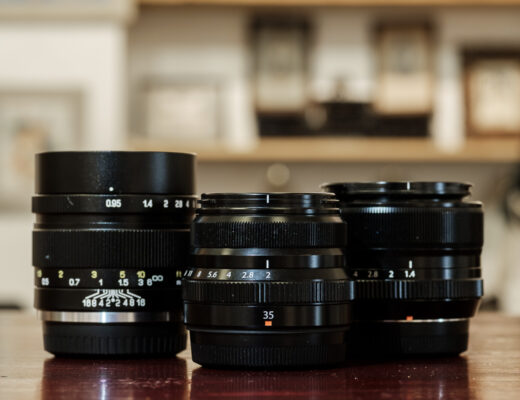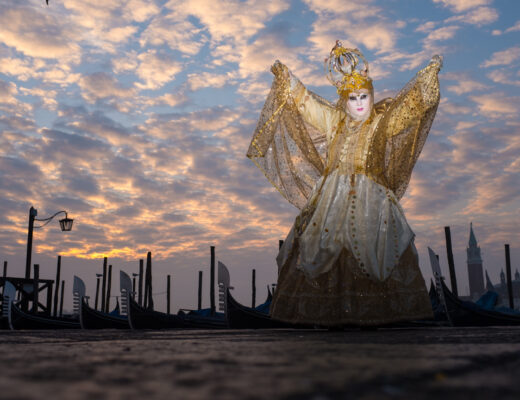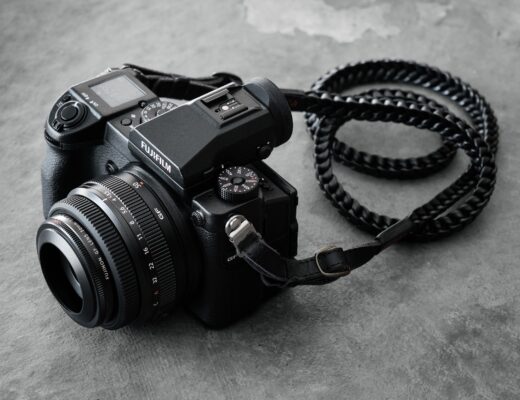As a former professional photographer, I had been very attached for a long time to my full-frame Nikon DSLR and the accompanying heavy lenses. However, as the time passed and I started hiking and backpacking more often in order to get away from my 9-5 desk job, I decided earlier in 2018 it was time to look for a smaller and lightweight camera for my trips in the nature.
It goes without saying I spent considerable amount of time on researching the market for my next camera. I was almost decided for a micro 4/3 system. Fortunately, my decision was shuttered into pieces after a visit to a local Luxembourgish photography store where I was advised on a Fujifilm system.
I have to admit that before that visit and for some strange reason, I considered Fujifilm to be a very high-end and expensive system, comparable to Leica. After reading a bit more about the Fuji’s camera lineup and how great their lenses are, including the kit ones, the choice was relatively easy: I decided for a X-T20 with XF 18-55mm f2.8-4. That’s how my happy adventure with Fujifilm has began!
My first backpacking trip was just a few weeks after purchasing the camera. This time allowed me get comfortable enough with the camera and the dials which Fuji is famous for. However, the real experience awaited for me during my first trip.
The First Trip – Backpacking in Portugal
When preparing for a backpacking trip, it’s mandatory to take only the essential items with you and to reduce the weight of a backpack to the minimum. It was particularly important for me because I planned on doing about 19 km (12 miles) each day. The X-T20 helped me a lot to achieve this and I can’t imagine doing this trip with a full-frame DSLR. Firstly, the most obvious observation: the camera with the XF 18-55 f2.8-4 lens is compact and lightweight. I would rather say it’s a very small camera when comparing its size with the number of features it packs, not to mention all of the rotating dials. Of course for someone who switched from a DSLR, it takes a few days to get used to the new grip and a way of holding the camera but it’s far away from being a drawback, rather a natural process that everyone who changes a camera has to go through.
Since I already mentioned the dials – I love Fujifilm for the dials in X-T20. When I want to adjust the exposure, the exposure compensation dial is right there next to the shutter button. I don’t have go to the menu or assign the exposure compensation role to one of the buttons. Another great implementation of the tactile functionality is having the ring on the lens dedicated to changing the aperture. Even though using the front dials in the DSLR for changing the aperture was heavily embedded in my muscle memory, I got very quickly accustomed to using the ring on the lens instead. For me personally, this is not only intuitive but also much easier to operate with the left hand while the right hand operates the shutter and can adjust ISO sensitivity at the same time.
I believe another feature that is great for backpacking with X-T20 and with most Fujifilm cameras is the possibility of charging the battery through the camera’s USB port. I don’t have to carry a charger anymore, which not only reduces the weight in my backpack but also saves me valuable space. One could argue that this partially even eliminates the need for backup batteries (keep in mind you would probably still need a spare battery while hiking in colder environment). Once you see the battery is getting low, you can use a portable powerbank and charge the battery while hiking or taking a break. Thanks to this approach and even though I had a spare battery with me, I never had to change the batteries during this trip.
The Second Trip – Hiking in Slovenian Mountains
I enjoyed taking picture with my X-T20 during the first trip so much that I didn’t even think of taking my other camera to the next trip to Slovenia. Since my wife and I were not backpacking this time, I could take a laptop with me to edit pictures at the end of each day. I had always been shooting only RAW with my Nikon DSLR but I decided to change the settings of the Fujifilm to shoot both JPEG and RAW this time. Even though I was ‘attached’ to editing RAW files, I quickly realized that in fact I started to do some small adjustments to the JPEG files and kept RAW files only as a backup when I had to pull more challenging details from the highlights or the shadows. Although I think Fujifilm’s JPEG files from X-T20 are great, I have to admit I make quite a few edits. By now, I have a more or less standard set of changes I apply to each nature and travel photograph in Lightroom: I often bring highlights down and dehaze the sky to bring up the contrast, as well as boost the overall clarity. I would say that 95% of editing I do is on JPEG files. Even though RAW files only make the remaining 5%, I’m still not ready to exclusively shoot in JPEG. It’s perhaps the legacy of the old habits from using the DSLRs.
I think that many other travel photographers, who from time to time hand over their camera to their traveling companions, also appreciate the Auto feature in X-T20. I got used to shooting in either full manual mode or partially manual. What I mean by this is that only the shutter speed is automatic. Everything else, including the focus point (yes, one focus point) are adjusted by me manually when taking a picture. When I was traveling with my DSLR and I wanted my wife to take a picture of me (or a stranger to take a picture of us) I had to remember to switch everything to automatic, including the focus points. Finding the settings for the latter one was often so cumbersome that I usually was leaving the aperture in the manual mode but I adjusted it to a higher value (like f8 or even higher) so that it wouldn’t matter on which subject in the frame the focus was on. As you can imagine, this approach is far from perfect, not to mention switching everything back to the manual mode afterwards.
However, I can change X-T20 to a complete full Auto Mode with one flip of a finger. In this mode, the camera recognizes the scenery and chooses the shooting mode accordingly, including face detection and focus points. I can give the camera to anyone to take a picture of us without any explanation what to do or any additional camera adjustments on my side. After a person takes a picture, I just switch the Auto Mode off and X-T20 goes back to my settings. This feature not only makes me but also my wife very happy. She just takes a picture without any stress or thinking what she needs to do besides pressing the shutter button.
Not a big fan of water
I think it goes without saying that weather can be less than favorable when backpacking or hiking, especially where I live (Luxembourg) or the neighboring countries like Belgium or the Netherlands where rain, rather than sun, is the standard. Unfortunately, X-T20 is not weather sealed, which makes things a bit more complicated for me. I always carry a camera attached to the backpack’s shoulder strap using the PeakDesign’s Capture clip. I have to put the camera immediately to my backpack when it starts raining or even sprinkles. I wish X-T20 was weather sealed, like X-T2 or the newest X-T3, to keep my mind at ease during very light rain. It’s not a complain, I completely understand Fujifilm had some financial and economic constrains considering the relatively low price of X-T20 and therefore I guess weather sealing couldn’t be a part of the camera.
FujiLove = TravelLove
I think my wife gets tired of me constantly saying during each hike how much I love my Fujifilm camera, but it’s true. For me personally it’s a perfect travel camera: it’s lightweight and small, it packs a lot of features and delivers great image quality. Would it be better if it was weather sealed? Sure. Would it be better with in-body image stabilization? Yes. But nothing in life is perfect and often you have to deal with situations and conditions being far from perfect when backpacking or traveling. There are other features in X-T20 I haven’t even mentioned but some other travel photographers find useful, like 4K video recording and external microphone line input.
For me personally, X-T20 has the right balance of features, which combined with the way they’re implemented in an intuitive way, including the dials, allow me to focus my mind on experiencing the nature and adventures while also taking pictures at the same time.




























